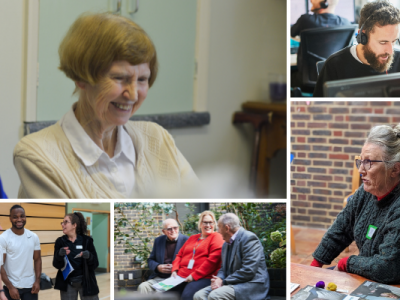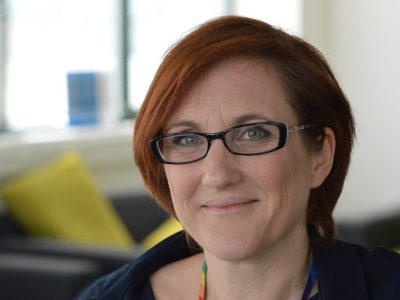Disruption must be bad, right? Wrong. Disruptive innovation, a term coined by Christensen in 1995, describes a process in which established markets are changed by new entrants who introduce radical technologies or ideas which lead to dramatic improvements for a greater number of people. Is healthcare in the UK ready for a bit of disruption? This article sets out to explore this question.
The big or dominant players in any market concentrate their efforts on improvements that are targeted at their high end, high spender customers, and engineer products and services that vastly exceed the needs of the average customer. Think about a standard laptop computer, whose huge processing power is capable of solving massively complicated mathematical problems, or constructing 3D architectural plans, but which spends 99% of its life displaying emails, and videos of funny cats. Staying in the IT industry, the developers of the home micro-computer are a classic example of the disruptive innovator. In the 1980s the industry was led by makers of mainframe computers, serving the needs of large corporate customers, tweaking their machines with a steady stream of improvements that kept pace with their customers changing needs. Along came the upstarts, who designed a product, the home computer, for a market that didn’t exist. The big boys thought they were mad, saw no threat to their own business model, and ignored them. The rest is history. In 1993 IBM posted a loss of $8 billion, at the time the largest single corporate loss, anywhere in the world, ever recorded. Disruptive innovation works either by:
- producing cheaper, simpler more convenient solutions, or
- solutions designed around the needs of lower end / less demanding consumers
- or indeed, some mixture of the two.
What’s that got to do with healthcare though? Some disruptive innovations have taken off, and become part of mainstream care. Self testing of blood glucose for people with diabetes is a good example. Thirty years ago, if you had diabetes you could indirectly get some, often unreliable, and sometimes downright misleading idea of what was happening to your blood sugar by testing your urine, maybe twice a day if you were really dedicated. Now you can access (although not yet through our NHS) a live update of your blood glucose four times a minute, read, and then store the results on an app on your smartphone. That this has happened owes more to the power of patients, and especially young, well educated people who have type 1 diabetes, than to any effort on the part of the health establishment. Genome technology is another example in which we find ourselves at an exciting take off point.
Mainstream healthcare is however, in the UK and globally, one of the most conservative, and change-resistant sectors there is. The establishment, made up of an alliance of senior doctors, large institutions such as teaching hospitals and Royal Colleges, and the pharma industry, has a huge vested interested in maintaining the status quo. It continues to be like IBM of the 1980s, focused on the elaboration of super-scientific, super-technical intrusive interventions targeted at the relatively small proportion of people with problems for which less interesting and more mundane treatments are not effective.
In a Harvard Business Review article , Christensen suggests that people with minor infectious illnesses represent the low end consumers, and that elderly people with complex, multiple co-morbidities represent the high end, high value customers traditionally well served by the establishment. That, in my view, he is wrong about the latter group, sadly raises some uncomfortable truths about my profession. In Medicine, the high end customers are either people with relatively simple problems that come with a lucrative treatment – think hip replacement for osteoarthritis, or young people who pose the kind of complex diagnostic challenge whose solution invites admiration, kudos, or academic publication – think Churg-Strauss syndrome, or heavy metal poisoning. If you are old, frail, not rich, and living on your own, the reality is that no matter how complex the interplay of your awful but dull common chronic illnesses, your diabetes, COPD, heart failure and depression might be, you would be very sadly mistaken if you thought that there was any part of our current healthcare system that regarded you as a high end, high value customer. You bring no prestige to our institutions, the drugs that will help you are old and cheap, you are fringe academia, and your diagnoses will not excite the wonder of the professor’s admiring peers.
In the US it is these very patients who are bankrupting hospitals. Here, we don’t do hospital closures, we just have fantasy accounting and bail-outs cloaked in political smoke screens. But, the problem isn’t going away. Whether you care about tax-payer money, or what it feels like to be frail and sick, the solution does not lie in incremental tweaks and fixes, or in high tech innovation. Nowhere is there greater need for disruptive innovations. To my mind, these fall into five groups:
- Upstream, simple, convenient interventions that anticipate needs, and prevent crises. Risk stratification, and listening to what matters most to the person, turning “how are you” into a real question rather than a variation on “hello”.
- Upskilling a whole range of care-givers, be they from a clinical or a social care background to take on tasks traditionally carried out by doctors and nurses.
- Embracing app style innovations that connect people themselves and their carers to simple metrics that allow them to monitor their condition.
- Dismantling “governance” processes such as regulatory inspections, middle management meetings and process KPI’s that have more to do with corporate back watching than connection to a clear purpose of better patient outcomes.
- Creating an environment that enables new organisations, which integrate primary care, community services, social care, and acute specialists, to flourish.
We had better get on with it. Otherwise, my advice is, find some lead piping, and get licking.
Image by Flickr user Michele M F via a CC Licence
You may also like

16.11.2023 | by Rich Taunt
Rebel alliance: The ever greater need for social enterprise

29.06.2023 | by Sarah James
Exceptional care, for everyone: Here Annual Report 2022/23

06.01.2023 | by Helen Curr
Dementia care: What if...

